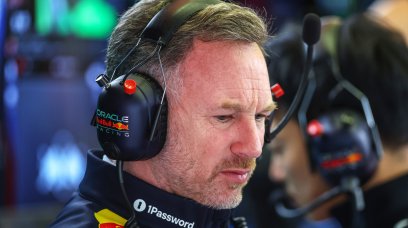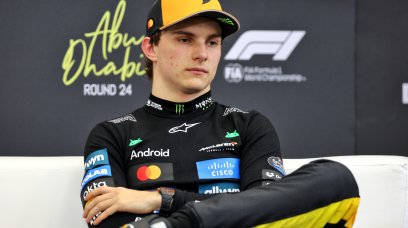When McLaren started the 2023 Formula 1 season, they tempered expectations by claiming a number of their development targets had been missed in the winter break. The team struggled to hit the ground running in the early stages, with it being one of the worst starts to a season in the teams history - not the way you want to celebrate your 60th anniversary. Things picked up at the Austrian Grand Prix, when the first of three major updates made their track debut with Lando Norris. This was followed by podiums at the British and Hungarian Grands Prix, while Oscar Piastri sneaked in a top three during the Sprint at Belgium. It has been quite the change in fortunes for the team, amidst a complete technical team overhaul during the season.
The design of the MCL60 was overseen largely by James Key before his departure from the Woking team, which is why much of the car was unchanged between Abu Dhabi last year Bahrain pre-season. It was the only F1 car in 2022 to share the same suspension layout with the Red Bull RB18, adopting a pull rod at the front and a push at the rear. In practice, the different geometry of both the rear and front suspension compared to the Red Bull RB18 (and this years RB19) was already evident on the MCL36 characterised by a very high anti-dive suspension at the front, combined with an equally accentuated and effective anti-squat at the rear. This layout has allowed, in combination with a floor featuring a striking design of the underneath Venturi channels, to be particularly effective against porpoising, effectively making the RB18 and also the RB19 immune to it. On the other hand, the corrections made on the MCL36 after the introduction of technical directive DT039/22 last year, seemed to have worked by almost completely eliminating the porpoising problem - but it emerged to not be the case.
Developments
The design of this season's MCL60 was based on this false belief that porpoising was eliminated, performed entirely with the same CFD and wind tunnel tools used for the previous single-seater. This has largely been done utilising the old Toyota wind tunnel in Cologne. The unavailability of cutting-edge tools in the last five years has constituted an increasingly evident limitation in Woking technical capabilities. This is evidenced in how the team gradually lost ground in direct confrontation with Mercedes, Red Bull and even Ferrari. The appointment of Andrea Stella at the beginning of 2023 as team principal made it possible to focus on the structural elements of the team. The coincided with the debut of the new wind tunnel, which finally finished in December 2022/January 2023 after it was slowed down due to the COVID-19 pandemic. After the departure of James Key, the McLaren aerodynamics team has only been able to make full use of the new technological features since last March. The first developments on the MCL60, even if they had concerned minor modifications to the bottom edge and adaptation of the profile of the front wing flaps as an adaptation to the characteristics of the first tracks of this season, were still the result of the tools adopted to design and develop the previous car. If the wind tunnel data had promoted the evolution of the MCL36 in the second half of 2022, they had also confirmed the theoretical progress of the MCL60 concept. From the first laps of the car on track, it seemed that the problems of rear-end instability. The accentuated porpoising suffered in 2022, had in fact returned to being peculiar characteristics of this season's car.
This was one the main priorities of Stella: finding the solution to the instability on fast corners, the sudden loss of downforce in the middle of the corner and the strong tire degradation caused by the poor balance of the MCL60. On the other hand, it was not a priority to produce low-downforce aerodynamic configurations. This was due to the need to understand the reasons and find solutions to the balance problems that had prevented the MCL60 from expressing its full potential was much more pressing. The confirmation of this came, partly surprising the McLaren engineers themselves, at Silverstone. The performance of the MCL60, which in Austria had introduced the first phase of upgrades characterised by revised sidepods, was completed at Silverstone with a new version of the front wing and an improvement of the out-wash function. These updates - characterized by hollowed out sidepods at the top and a wider lower channel - take a lot of inspiration from the Aston Martin AMR23. The net result has not only increased the downforce produced by the underbody of the car, thanks to its totally different profiling at the level of the Venturi channels and lower flow diverters, but also made a decidedly positive contribution to its dynamic behavior. Norris was less enthusiastic regarding a competitiveness he had achieved, admitting that he was surprised by the car's performance and considering this largely a consequence linked to the characteristics of the track, rather than any substantial step forward. The objective data, however, speaks of a team that has progressively come out of a negative technical cycle, or rather, where it was not actually clear which direction to follow at a conceptual and development level.
Comparison between early season and Silverstone
Comparing the side view of the two versions highlights the areas of interventions on the MCL60. It can be noted the modification of the floor at the level of the lower flow diverters and of the outermost barge board with greater vertical extension. The sidepods are characterised by a raised lower profile to increase the lower channel between the sidepod and the floor. The upper profile of the sidepods is also different, more in line with the sloping shape of those of the AMR23, which it inherited the upper sculpted channel along its entire length. The large vertical slits have disappeared, in their place gills have been introduced at the base of the engine hood. The conformation of the "pockets" under the vehicle floor is also different, functional to the management of the porpoising.
First Baku floor intervention
The Azerbaijan-spec MCL60 had sported the first evolution of the floor, both at the level of the lateral edge and at the angle of the inlet section of the lower flow diverters. In the first case, the rim was characterized by a perpendicular blowing that separated the front section from that in front of the rear wheels. At the level of the latter, the blowing that characterized the previous version has been eliminated, in favor of a single profile interrupted by the presence of a horizontal vortex generator in front of the rear wheels.
Similarities to Aston Martin
As visible in this drawing (above), the upper profile of the AMR23 introduced in Canada was a sculpted channel to increase the pressure of the flow towards the rear.
RB19 extreme Anti-dive concept
This drawing (above) illustrates how different the suspension concept of the MCL60 is to that of the RB19. The extreme anti-dive of the front suspension of the RB19 provides a specifically desired position of the pitch centre, to reduce the longitudinal load transfers on the car.
Most read








